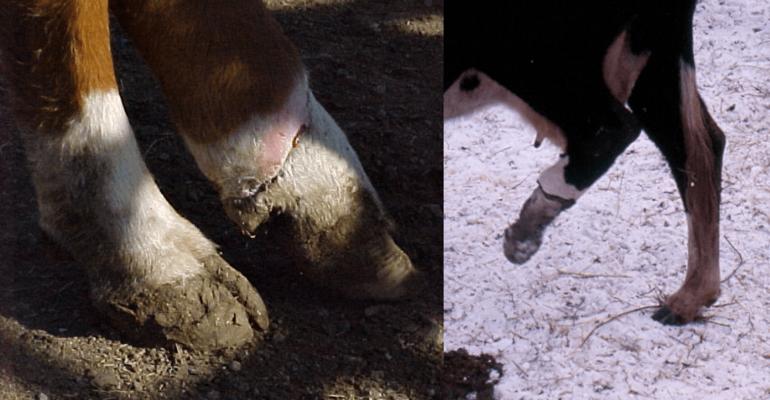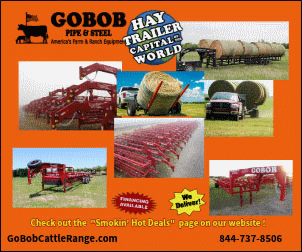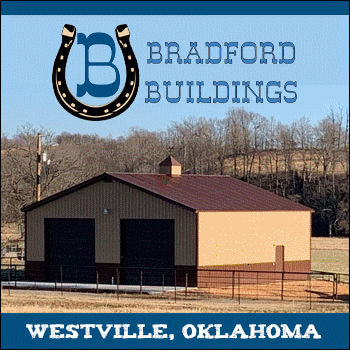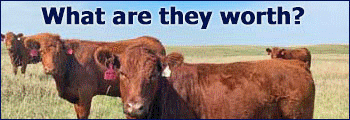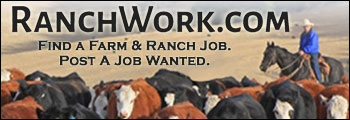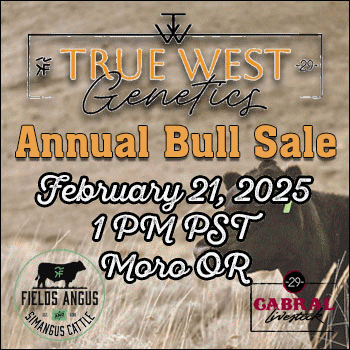Source: University of Missouri Extension
Warm fall weather and fescue pasture growth set up potential poisonous pastures causing fescue foot in cow herds this winter.
“As the cold weather moves in, cattle producers are likely to notice some cows or yearlings on fescue pastures may be slow-moving early in the day,” says Eldon Cole, University of Missouri Extension livestock specialist. This might be an early warning sign of fescue foot.
Ergot alkaloids produced by a fungus in infected fescue restrict blood flow in cattle. Fescue foot develops in long cold spells. In cows, low blood flow to feet allows frozen hooves. In worst cases, hooves fall off.
Warning signs
Producers may also notice slight swelling in the rear ankles and possible breaks in the skin from the top of the hoof up above the dew claw, Cole says. Early detection of limping is key. By the time hooves on hind feet show red, gangrene may have set in.
Cole suggests putting the lame animal in a chute and checking its lower leg, which might feel cooler because of the lack of blood flow in that area. If the animal’s leg feels cooler than the rest of the leg, move the affected animals from that pasture and drylot them, or at least put them on a different pasture, he adds.
Switch up feed
On most farms, fescue remains the most-used forage. It is hardy because the toxin protects the plant from pests. However, cattle producers should consider alternative feeding options:
Secluded feeding. Confine and feed limping cows grain and nontoxic hay. Injured cattle cannot walk to graze pastures, and often stay in place and die from lack of feed.
Avoid ensiled fescue hay. Plastic-wrapped moist hay, or balage, preserves toxins.
Wait to graze. Another preventive plan is to feed winter hay in fall cold spells. The pastures left standing in winter decrease in toxins with time. By late January, there will be less poison in the grass. Stockpiles can be grazed late in winter with few problems.
Plan for prevention
There’s no cure for fescue foot, but prevention works. Here are some suggestions:
Convert pastures. Herd owners who converted toxic fescue pastures to a novel-endophyte fescue need not worry. There are no toxins, and forage quality is higher with the new fescues. Add nitrogen. More nitrogen fertilizer on novel-endophyte grass brings more feed.
Stop grazing early. Prevention includes not grazing fall-grown fescue too short. Recent research shows most toxins in the fall stay in the lower 2 inches of the fescue plant. Management-intensive Grazing with quick rotations through paddocks helps prevent short grazing.
Sow cool-season grasses. Cool-season grasses have an advantage, growing rapidly two times a year: Growth in spring and fall adds to grazing seasons.
While there is no cure, the Alliance for Grassland Renewal offers training on how to renovate pastures. See grasslandrenewal.org. MU Extension agronomists and livestock specialists also can offer advice on how to prevent fescue foot.
